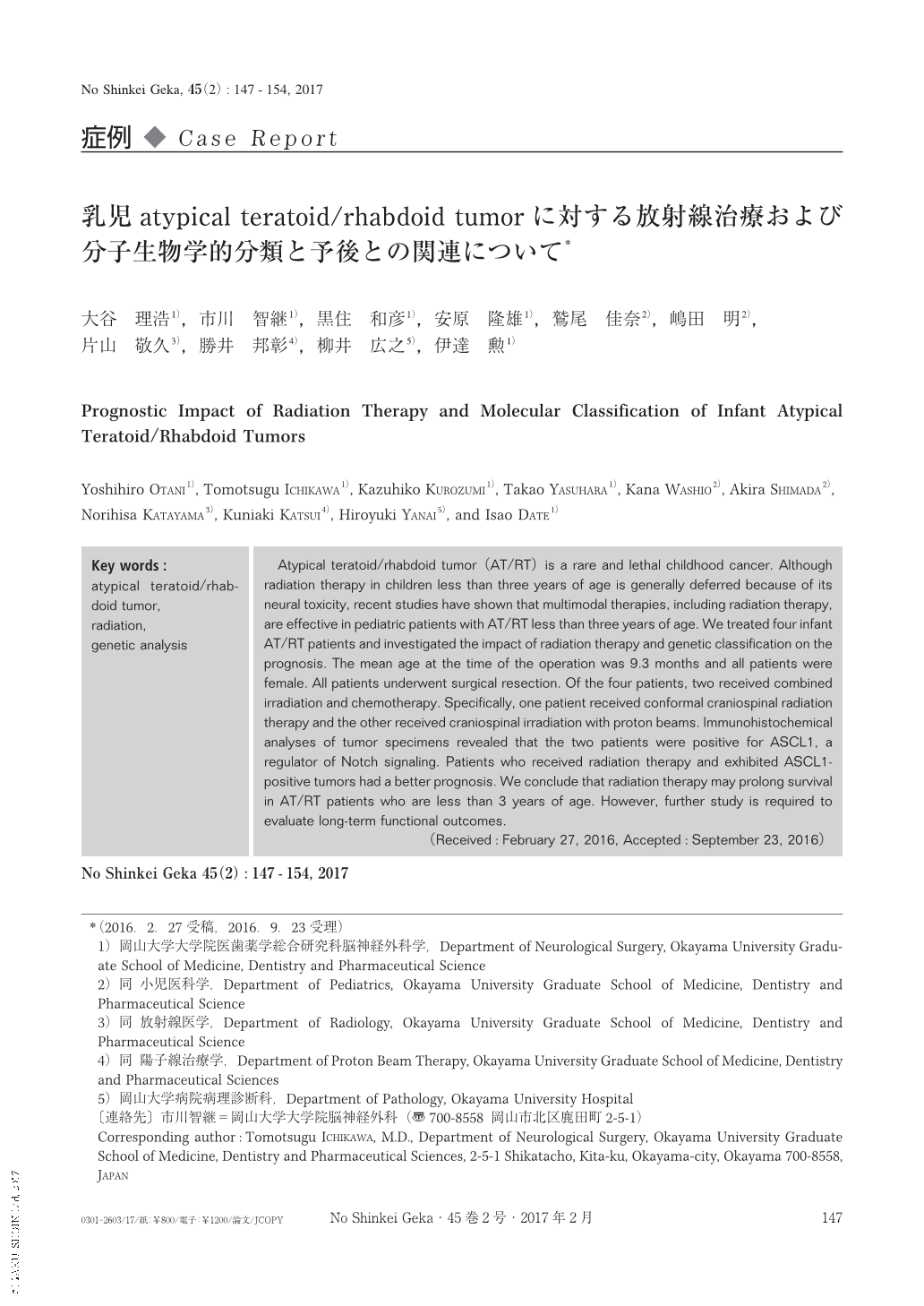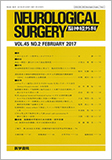Japanese
English
- 有料閲覧
- Abstract 文献概要
- 1ページ目 Look Inside
- 参考文献 Reference
Ⅰ.はじめに
Atypical teratoid/rhabdoid tumor(AT/RT)は,1995年にRorkeらにより提唱され,WHO2000に新しい腫瘍概念として採用された胎児性腫瘍である12).希少な腫瘍のため定まった治療方針はなく,手術や化学療法を行った場合でも3年生存率は約10%と非常に予後不良な疾患である17).これまで3歳未満の患児では放射線治療は行っていない報告が主であったが,生命予後が極めて不良であったため,近年では3歳未満でも放射線治療を行った報告が散見される.今回われわれは,当院で治療を行った乳児AT/RTの4例について,放射線治療の有無および近年報告されている分子生物学的所見に基づく分類について,予後との関連を検討した.
Atypical teratoid/rhabdoid tumor(AT/RT)is a rare and lethal childhood cancer. Although radiation therapy in children less than three years of age is generally deferred because of its neural toxicity, recent studies have shown that multimodal therapies, including radiation therapy, are effective in pediatric patients with AT/RT less than three years of age. We treated four infant AT/RT patients and investigated the impact of radiation therapy and genetic classification on the prognosis. The mean age at the time of the operation was 9.3 months and all patients were female. All patients underwent surgical resection. Of the four patients, two received combined irradiation and chemotherapy. Specifically, one patient received conformal craniospinal radiation therapy and the other received craniospinal irradiation with proton beams. Immunohistochemical analyses of tumor specimens revealed that the two patients were positive for ASCL1, a regulator of Notch signaling. Patients who received radiation therapy and exhibited ASCL1-positive tumors had a better prognosis. We conclude that radiation therapy may prolong survival in AT/RT patients who are less than 3 years of age. However, further study is required to evaluate long-term functional outcomes.

Copyright © 2017, Igaku-Shoin Ltd. All rights reserved.


